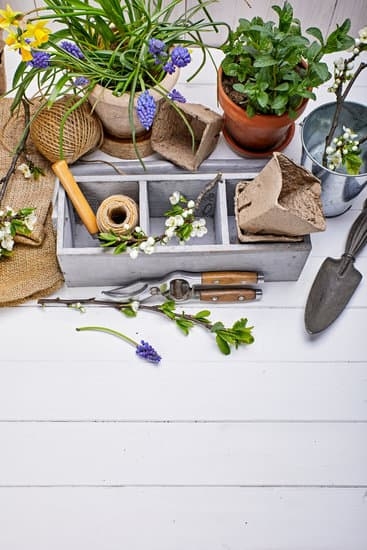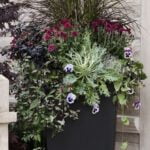Gardening cheap ideas are not only a practical way to save money but also offer numerous benefits for individuals looking to cultivate their green thumb without breaking the bank. Gardening on a budget can be a fulfilling and rewarding experience, allowing you to create a beautiful and thriving garden while being mindful of your finances.
One of the advantages of gardening on a budget is the opportunity to repurpose and recycle materials, providing creative ways to save money on essential gardening supplies. From using old containers as planters to turning household items into garden decorations, the possibilities for cost-effective gardening are endless. By adopting a resourceful mindset, you can transform everyday items into functional and aesthetic additions to your garden.
In addition to repurposing materials, DIY projects can further enhance your gardening experience by enabling you to craft your own planters and decorations. Creating custom-made pieces not only adds a personal touch to your garden but also allows you to tailor designs according to your preferences and needs. Embracing DIY projects in gardening not only saves money but also fosters creativity and self-sufficiency in cultivating your outdoor space.
Repurposing and Recycling
One great way to repurpose materials for gardening is by using old tires. Painted and stacked tires can function as a colorful and inventive container garden, perfect for growing flowers, herbs, or even vegetables in small spaces.
Additionally, plastic bottles can be transformed into self-watering planters by cutting them in half and creating a wicking system with string or fabric. These DIY projects not only save you money but also reduce waste by giving new life to items that would otherwise end up in the landfill.
Furthermore, consider exploring thrift stores, yard sales, or online marketplaces for affordable gardening supplies. You can often find gently used pots, tools, and decorations at a fraction of the cost of buying them brand new. By embracing the concept of “reduce, reuse, recycle” in your gardening endeavors, you not only minimize your expenses but also contribute to sustainable practices that benefit both your wallet and the planet.
| Key Point | Details |
|---|---|
| Upcycling Materials | Repurpose old materials like mason jars and wooden pallets for planters and raised beds. |
| Creative Container Ideas | Use painted tires or plastic bottles to create unique and budget-friendly containers for your plants. |
| Thrifting Gardening Supplies |
DIY Projects
When looking for gardening cheap ideas, one of the most cost-effective ways to spruce up your garden is by creating your own planters and garden decorations. Not only does this help you save money, but it also adds a personal touch to your outdoor space.
One simple DIY project is repurposing old containers such as mason jars, tin cans, or wooden crates into unique planters. These items can often be found around the house or purchased at a low cost from thrift stores.
Another fun and creative DIY project is making your own garden decorations. You can use materials like rocks, pebbles, twigs, and even recycled items like old ceramic plates or glass bottles to add aesthetic appeal to your garden.
For example, painting rocks with colorful designs or turning an old ladder into a vertical garden display are great ways to add visual interest without spending a lot of money. DIY projects not only provide budget-friendly options for gardening but also allow you to unleash your creativity and showcase your personality in your outdoor space.
In addition to saving money, DIY projects offer a sustainable approach to gardening by reducing waste and repurposing items that might otherwise end up in the landfill. By using materials you already have or sourcing second-hand supplies, you contribute to eco-friendly practices while enjoying the process of creating unique planters and decorations for your garden.
| DIY Project Ideas | Benefits |
|---|---|
| Repurposing old containers into planters | Cost-effective and adds a personal touch |
| Making garden decorations from recycled materials | Reduces waste and allows for creative expression |
Seed Saving and Propagation
One of the most budget-friendly ways to expand your garden is through seed saving and propagation. Not only does this method save you money on buying new seeds every season, but it also allows you to preserve heirloom varieties and adapt them to your specific growing conditions. Harvesting seeds from your existing plants is a simple yet rewarding process that can help create a self-sustaining garden for years to come.
When saving seeds, make sure to choose healthy, mature fruits with good traits that you want to replicate in future plants. To ensure the success of seed saving, it’s essential to properly dry and store them in a cool, dark place.
Additionally, learning about different propagation techniques such as cuttings, division, or layering can help you multiply your plant collection without spending a fortune on new nursery plants. By mastering these cost-effective methods, you can significantly reduce your gardening expenses while constantly adding diversity to your garden.
Furthermore, participating in seed swaps or joining community seed libraries can also be a great way to expand your plant varieties without breaking the bank. These initiatives allow gardeners to exchange seeds with one another, providing access to unique and rare plants that may not be available commercially.
Seed swapping not only fosters a sense of community among fellow gardeners but also promotes biodiversity and conservation of heirloom varieties. By leveraging the power of collective sharing and conservation efforts, you can enrich your garden while staying true to the principles of gardening cheap ideas.
Community Gardening
When participating in community gardening, consider the following benefits:
- Access to shared tools and equipment
- Collaborative learning from experienced gardeners
- Shared responsibility for maintenance tasks
Moreover, community gardens often provide a wider variety of plants than you might be able to grow in your own backyard. This diversity allows you to experiment with different species and expand your knowledge as a gardener. Overall, community gardening is not only an affordable option but also a valuable opportunity to connect with like-minded individuals in your neighborhood.
Joining a local initiative is not just about saving money – it’s also about contributing to the overall well-being of the community. By participating in community gardening projects, you are actively promoting sustainability, fostering healthy habits, and creating a more beautiful environment for everyone to enjoy. Take advantage of these cheap gardening ideas by joining a local initiative today and see your garden – and your community – thrive.
Container Gardening
Choosing the Right Containers
When starting a container garden, it’s important to choose the right containers for your plants. Consider using recycled materials such as yogurt containers, milk jugs, or even old wooden crates. These items can be easily obtained for free or at a minimal cost, allowing you to save money on expensive planters. Make sure the containers have proper drainage holes to prevent waterlogged soil and root rot.
Maximizing Space With Vertical Gardening
One creative way to maximize space in a container garden is through vertical gardening. Utilize vertical surfaces like walls or fences by installing shelves, hanging planters, or trellises for climbing plants such as tomatoes or cucumbers. Vertical gardening not only saves space but also adds visual interest to your outdoor area. Look for inexpensive ways to create vertical structures, such as using PVC pipes or wooden pallets.
Low-Cost Planting Mixes and Fertilizers
Instead of purchasing expensive planting mixes and fertilizers from the store, consider creating your own at home. Mix compost with garden soil and perlite or vermiculite for a nutrient-rich planting mix that promotes healthy plant growth. Additionally, utilize organic kitchen waste like coffee grounds, eggshells, and vegetable scraps as natural fertilizers for your container garden. These simple yet effective strategies are essential for gardening cheap ideas while still ensuring successful plant growth in your container garden.
Composting
Here are some simple steps to start composting in your own backyard:
- Designate a composting area: Whether you choose a bin, pile, or tumbler, make sure you have a designated space for your compost.
- Layer your materials: Alternate between green materials (food scraps, grass clippings) and brown materials (leaves, straw) to create a balanced compost pile.
- Keep it moist: To break down effectively, your compost pile needs to stay moist but not soggy. Water it regularly as needed.
- Aerate the pile: Use a pitchfork or shovel to turn the pile every few weeks. This will help speed up the decomposition process.
- Harvest the finished compost: After several months, your compost should be ready to use in the garden. Simply screen out any large pieces and mix it into the soil.
Composting not only provides free fertilizer for your garden but also helps improve soil structure and water retention. By recycling organic waste into nutrient-rich soil amendments, you are creating a sustainable cycle that promotes healthier plants and reduces the need for store-bought fertilizers. Plus, by diverting kitchen scraps from the trash bin, you are reducing methane emissions from landfills and minimizing your carbon footprint. So start composting today and watch your garden thrive with minimal cost involved.
Plant Swapping and Sharing
One of the most common ways to engage in plant swapping is by attending local gardening events or joining online gardening communities where members actively trade plants. Whether it’s through organized meet-ups, swap meets, or virtual exchanges, these platforms provide opportunities for gardeners to connect with like-minded individuals and enhance their gardens at minimal cost.
Additionally, establishing personal relationships with other gardeners through plant swapping can lead to valuable knowledge sharing, tips on gardening cheap ideas, and ongoing support in your horticultural pursuits.
In addition to acquiring new plants through swaps, sharing excess produce from your garden can also be a rewarding way to cut down on grocery expenses while fostering a sense of community abundance. By redistributing surplus fruits, vegetables, or herbs with friends or neighbors who appreciate fresh homegrown produce, you not only prevent waste but also build relationships centered around food sharing and sustainability.
Plant swapping and produce sharing ultimately emphasize the importance of cooperation and generosity within the gardening community while demonstrating that bountiful gardens can thrive even on a shoestring budget.
Accountability in Gardening
Benefits of Establishing a Gardening Budget
Setting a budget for your gardening endeavors is essential to ensure that you can enjoy the hobby without overspending. By establishing financial limits, you can prioritize your expenses, identify areas where you can cut costs, and prevent impulse purchases. Moreover, having a budget encourages resourcefulness and creativity in finding affordable solutions for your gardening needs. Whether you are a beginner or experienced gardener, creating a well-planned budget will help you track your expenses and maximize the resources at hand.
Tips for Setting an Effective Gardening Budget
When creating a gardening budget, it is important to take into consideration all aspects of your gardening activities. Start by outlining the different categories where you typically spend money on such as seeds, soil amendments, tools, and watering supplies. Set realistic financial goals based on your gardening needs and capabilities.
Researching prices beforehand and comparing different options can also help in setting a realistic budget. Additionally, consider incorporating some flexibility in your budget to account for unexpected expenses or opportunities that may arise during the gardening season.
Sticking to Your Gardening Budget
Once you have established a budget for your gardening activities, it is crucial to stay disciplined and adhere to it throughout the season. Keep track of your expenses by maintaining detailed records of purchases and regularly reviewing them against your budget plan.
Look for ways to save money by utilizing gardening cheap ideas such as repurposing materials, DIY projects, seed saving techniques, or joining community initiatives for shared resources. By staying committed to your budget goals and continuously evaluating your spending habits, you can cultivate a thriving garden while staying within your financial means.
Conclusion
In conclusion, gardening on a budget does not mean sacrificing the beauty or productivity of your garden. By implementing creative and cost-effective ideas, anyone can enjoy the benefits of gardening without breaking the bank. From repurposing and recycling materials to DIY projects, seed saving, and community gardening, there are numerous ways to save money while still creating a thriving garden space.
One of the key aspects of gardening on a budget is maximizing resources through container gardening. This allows individuals with limited space or resources to still enjoy cultivating plants and flowers. Additionally, composting is a fantastic way to not only reduce waste but also create nutrient-rich soil for your garden – all at no extra cost.
Lastly, involving yourself in plant swapping and sharing initiatives can further help you build a diverse garden without spending too much money. By being accountable in your gardening practices and setting a budget that works for you, sustainable and affordable gardening practices can be accessible to everyone. Overall, with these cheap gardening ideas in mind, creating a beautiful and flourishing garden is well within reach for all enthusiasts – no matter their financial situation.
Frequently Asked Questions
How Do I Make My Garden Nice on a Budget?
One way to make your garden nice on a budget is by starting with a plan. Determine what plants you want to include and where they will be placed. Look for affordable options at local nurseries, garden centers, or online plant sales.
You can also consider growing plants from seeds or cuttings to save money. Another budget-friendly tip is to recycle materials like containers, old furniture, or rocks for decorations in the garden.
How Do I Landscape My Backyard on a Budget?
Landscaping your backyard on a budget can be achieved by first evaluating the space you have and deciding on a design that suits your taste and lifestyle. Consider low-maintenance plants that are native to your area as they tend to be more cost-effective.
Using gravel or mulch as ground cover can help reduce costs compared to installing grass or other expensive options. DIY projects such as building raised beds, pathways, or trellises can also add character without breaking the bank.
What Is the Cheapest Ground Cover for a Garden?
One of the cheapest ground cover options for a garden is using mulch, which comes in various types such as wood chips, bark nuggets, straw, or shredded leaves. Mulch not only helps in weed suppression and moisture retention but also adds an aesthetic appeal to the garden while being cost-effective.
Another inexpensive ground cover option is planting ground cover plants like creeping thyme, clover, or sedum that provide coverage while requiring less maintenance and water compared to traditional grass lawns. Additionally, spreading cardboard or newspaper covered with mulch over bare soil can act as a temporary and economical ground cover solution until plants establish themselves.

Welcome to my gardening blog! I am passionate about plants and enjoy sharing my knowledge and experiences with others. In this blog, I will write about everything related to gardening, from tips on how to get started to updates on my own garden projects.





